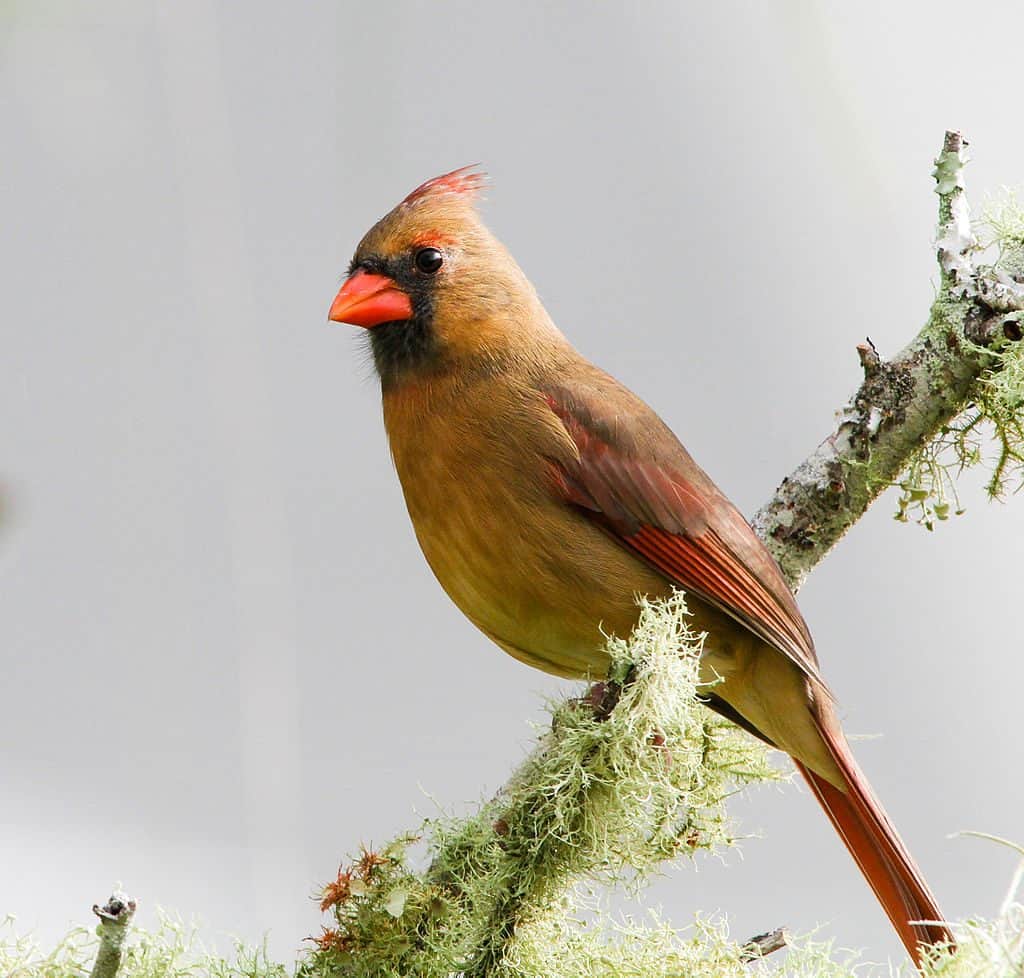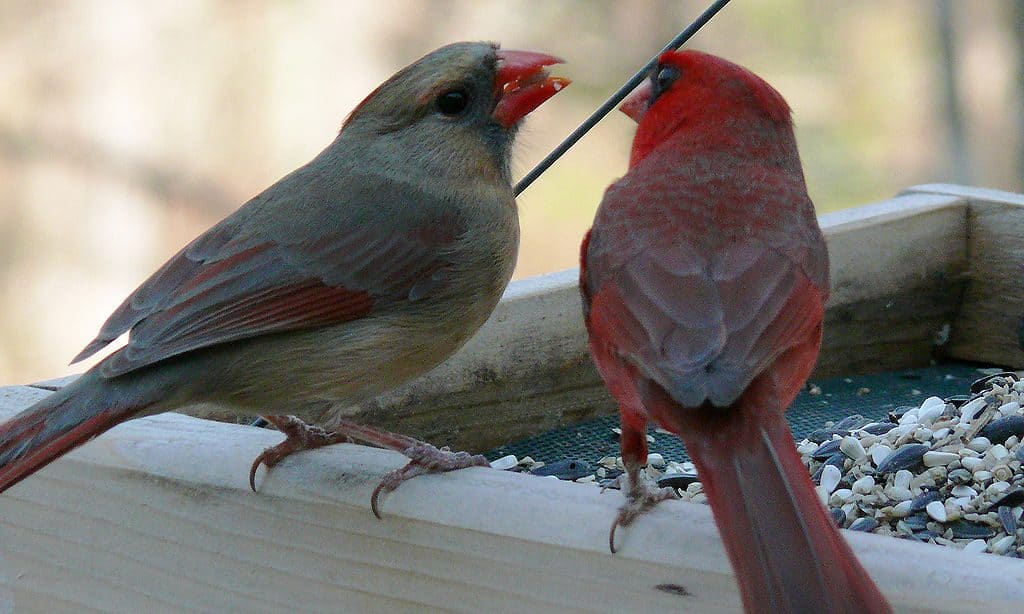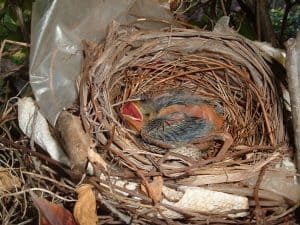The northern cardinal, also known as the Virginia Cardinal, is likely one of the birds that even non-bird keepers may recognise. With its brilliant red plumage, black face and distinctive crest, it is a popular bird on Christmas cards and in winter scenes. While it is illegal to keep in the US, it is also found in aviculture across Europe and in the UK.
In the wild
Although known as the Northern Cardinal (Cardinalis cardinalis), this is a bird with a substantial range – from southern Canada through eastern US down to Texas and into Mexico as far south as Belize. It lives in woodland areas as well as in gardens, shrub land and even swamp habitats. They will often visit garden feeders in their habitats and the males are known to sit on exposed perches to sing.
They are constant in their habitats, not migrating by season though they may move around in their location to find the best sources of food. In winter, they also flock together and roost in the same place but during breeding season, can be aggressive with other cardinals and live one pair to an area. Sometimes the males will even attack other red objects they see in case it is another bird!
The northern cardinal is a member of the genus Cardinalis along with the Desert Cardinal and Vermilion Cardinal. This genus is part of the larger family Cardinalidae, a family within the Passeri suborder of the Passeriformes order. The larger family includes species such as the grosbeaks, the Indigo bunting and also some tanagers following recent changes to the zoological classification system.
Description
These birds are a medium size for passerines, around 19 – 23cm in length with a wing span around 25-31 cm and weighing around 42-48 grams. They have short red bills with prominent crests on both sexes and long tails while their feet and legs are a pinkish brown shade. Males are almost entirely red in plumage with black face masks and bibs.
Females are light or greenish-brown with red markings on the wings, crest and tail. Their faces are a lighter shade. Juveniles look like females with a grey-black beak that changes colour as they mature.

The northern cardinal boasts being the state bird of more states in the US than any other – it is the state bird for Illinois, Indianan, Kentucky, North Carolina, Ohio, Virginia and West Virginia.
Breeding
The northern cardinal bond for breeding season and the following year may return to the same mate or sometimes choose a new one. Occasionally, males mate with more than one female. Their breeding season in the wild is between March and September and two broods a year is normal. The female will begin incubating the second brood while the male finishes rearing duties with the first one.

Courtship involves them raising their crests and swaying from side to side, singing at the female they like. Once she accepts him, he can feed her and bring nesting material. She then builds the nest which is lined with soft materials such as feathers, mammal hair and moss. The nest is a tidy affair around 5-8cm tall and around 10cm across. They are usually built in shrubs or low trees from one to three metres off the ground.

Clutches are normally 1-5 eggs, three being the average and the eggs are white with a touch of green, blue or brown and markings on them that can be brown, grey or lavender. They are incubated for 11-13 days with the female doing most of the work while the male brings food and protects the nest.
Chicks are featherless and the female stays in place for the first 2-3 days then both birds feed the young, mostly insects. They fledge at around 9-11 days and can fly by around 20 days. They are independent between 25-56 days old and at this time, parents will drive them out of the territory.
In captivity
Northern Cardinals are best kept in outdoor enclosures rather than cages as they are active birds. Kept indoors or in cages, keepers report they lose their colour and may become sickly. They are quite a dominant species and will attack other birds if they think they are a threat so shouldn’t be kept with smaller birds.
In terms of diet, they will take a good softbill diet with seeds, buds, fruits and live food such as insects and spiders. Some breeders include food containing carotenoids to help boost their colour, similar to the food given to Red Factor canaries. They will also enjoy seeds such as hemp, buckwheat and sunflower as well as millet. Live food such as waxworms, mealworms and crickets are favoured and necessary for raising chicks.